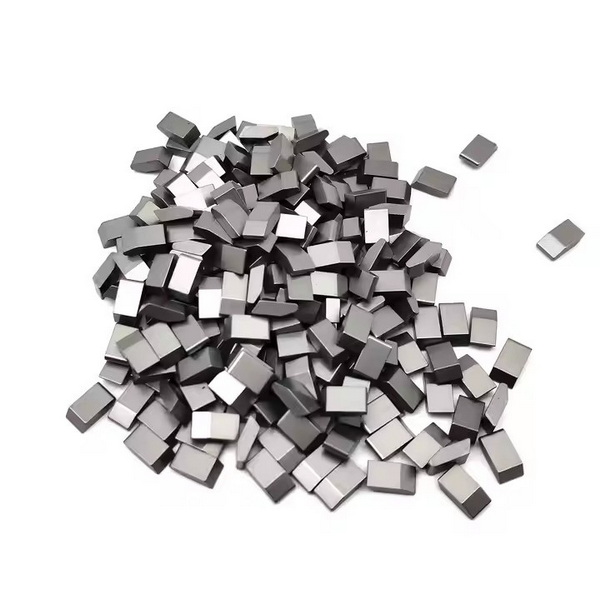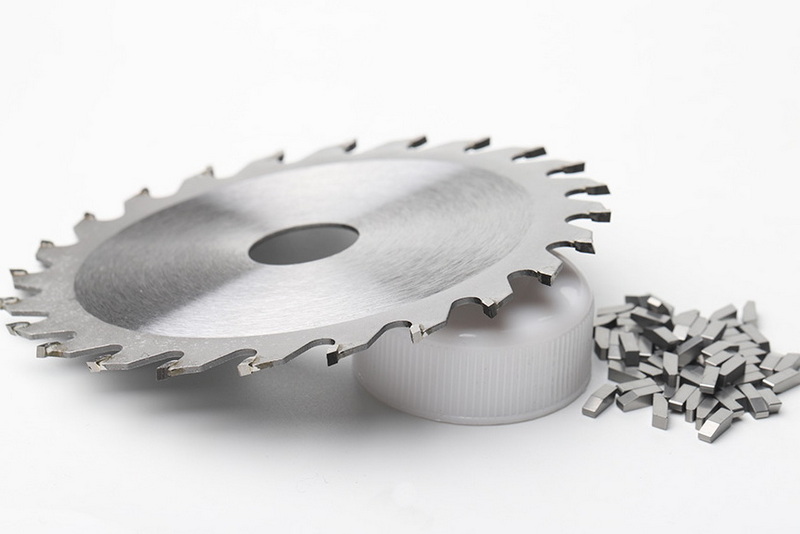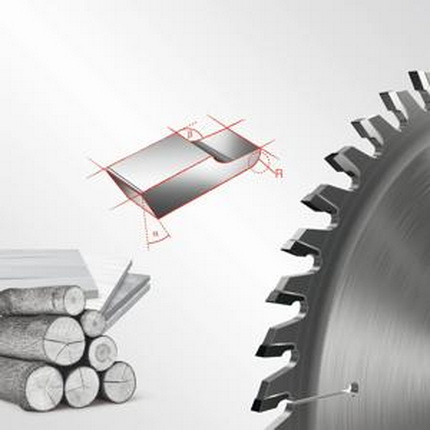Content Menu
● What is Tungsten Carbide?
>> Properties of Tungsten Carbide
>> Common Uses
● Biocompatibility of Tungsten Carbide
>> Applications in Medical Devices
>> Advantages of Tungsten Carbide in Medical Settings
● Potential Health Hazards
>> Routes of Exposure
>> Short-Term Health Effects
>> Long-Term Health Effects
>> Toxicity Concerns
● Safety Measures and Precautions
>> Engineering Controls
>> Personal Protective Equipment (PPE)
>> Hygiene Practices
>> Medical Monitoring
● Conclusion
● FAQ
>> How does tungsten carbide compare to regular steel?
>> Is tungsten carbide harmful to the environment?
>> What are the primary components of tungsten carbide?
>> How is tungsten carbide manufactured?
>> What are the key properties of tungsten carbide?
● Citations:
Tungsten carbide is a compound made from tungsten and carbon atoms, known for its hardness, wear resistance, and durability[5]. It is commonly used in industrial applications, including cutting tools, drill bits, and wear-resistant components[7]. However, its potential effects on the human body are a subject of consideration, especially with increasing applications in medical devices[3]. This article explores the biocompatibility, potential hazards, and safety measures associated with tungsten carbide.

What is Tungsten Carbide?
Tungsten carbide (WC) is a hard, dense material composed of tungsten and carbon, typically in a 1:1 ratio[5]. Often, a metallic binder like cobalt is included to improve toughness and durability[5]. It is manufactured through a powder metallurgy process, where tungsten carbide powder is mixed with a binder, compacted, and sintered at high temperatures to form a solid composite[5].
Properties of Tungsten Carbide
Key properties of tungsten carbide include:
- Extreme Hardness: Ranks between 8.5 and 9 on the Mohs scale[5][7].
- High Wear Resistance: Capable of withstanding abrasive conditions without significant degradation[5][7].
- Thermal Stability: Maintains hardness and strength at high temperatures, with a melting point exceeding 2,870°C (5,200°F)[7].
- Corrosion Resistance: Ensures durability in harsh chemical environments[7].
- High Tensile Strength[5].
- High Density: Nearly twice that of steel, contributing to its resistance to wear and deformation[7].
Common Uses
Tungsten carbide's properties make it suitable for many applications:
- Cutting Tools: Used in machining for its superior cutting performance and extended tool life[5][7].
- Drill Bits: Maintains sharpness longer, crucial for efficient drilling operations[5][7].
- Wear Parts: Used in components like pump components, valve seats, and liners due to its wear resistance[5].
- Jewelry: Used in rings and fashion jewelry due to its durability and scratch resistance[7].
- Medical Devices: Utilized in implants and surgical instruments because of its biocompatibility[3].
Biocompatibility of Tungsten Carbide
Biocompatibility is a vital requirement for medical devices, as they come into contact with the human body[3]. Tungsten carbide demonstrates excellent biocompatibility, meaning it is well-tolerated by the body and does not trigger adverse reactions[3].
Applications in Medical Devices
Tungsten carbide is used in several medical applications:
- Surgical Instruments: Ensures precision and durability during surgical procedures[3].
- Implants: Well-tolerated by the body, reducing the risk of complications[3].
- Dental Tools: Provides the necessary hardness and wear resistance for effective dental procedures.
Advantages of Tungsten Carbide in Medical Settings
- Reduced Risk of Adverse Reactions: Its biocompatibility ensures patient safety[3].
- Durability: Extends the lifespan of medical instruments and implants[7].
- Precision: Allows for accurate and effective medical procedures[5].

Potential Health Hazards
While tungsten carbide has many benefits, exposure can pose health hazards, especially in occupational settings[1].
Routes of Exposure
Workers can be exposed to tungsten carbide through:
- Inhalation: Breathing in dust, mist, or fumes containing tungsten carbide[1][2].
- Skin Contact: Allowing skin to come into contact with dust or solutions containing tungsten carbide[1].
- Ingestion: Eating, drinking, or smoking in areas contaminated with tungsten carbide[2].
Short-Term Health Effects
Short-term exposure to tungsten carbide can result in:
- Skin Allergies: Allergic reactions leading to rashes and itching[1].
- Skin Burns: Direct contact can cause burns[1].
- Eye Irritation: Exposure to dust or particles can irritate the eyes[1].
- Gastrointestinal Issues[1].
Long-Term Health Effects
Regular inhalation of tungsten carbide dust or powder can lead to more severe long-term health issues[1]:
- Respiratory Irritation: Irritation of the nose and mouth[1].
- Lung Issues: Repeated exposure can cause wheezing, coughing, and shortness of breath[1].
- Permanent Lung Damage: Regular inhalation can lead to scarring or permanent respiratory problems[1].
- Asthma: Especially if the tungsten carbide contains nickel and chromium, which can trigger asthma[2].
Toxicity Concerns
Pure tungsten carbide is generally considered non-toxic[6]. However, when combined with other elements like cobalt, it can exhibit increased toxicity[6].
- Tungsten Carbide Cobalt Nanoparticles: These have shown some toxicity, although the reasons are not fully understood[6].
- Exposure Limits: It is essential to monitor tungsten levels in workers exposed to tungsten carbide to ensure they do not exceed safety standards[6].
Safety Measures and Precautions
To mitigate the health risks associated with tungsten carbide exposure, several safety measures and precautions should be implemented[2][6].
Engineering Controls
- Local Exhaust Ventilation: Use ventilation systems to control dust and mist at the source[2].
- Wet Methods: Apply wet methods to prevent dust buildup during grinding, polishing, and sharpening[2].
- HEPA Filters: Use vacuums with HEPA filters to clean work areas and prevent dust dispersion[2].
Personal Protective Equipment (PPE)
- Respirators: Use respirators approved for dust and mist if ventilation systems are not available[2].
- Gloves: Wear protective gloves to prevent skin contact[2].
- Safety Glasses: Use safety glasses to protect the eyes from dust and particles[2].
- Protective Clothing: Wear full-body protective clothing if necessary, changing work clothes daily if contaminated[2].
- Gas Masks: Wear gas masks in environments with high dust concentrations[6].
Hygiene Practices
- Wash Hands: Wash hands and exposed skin thoroughly before eating, drinking, or smoking[2].
- No Eating or Drinking in Work Areas: Avoid consuming food or beverages in areas where tungsten carbide is present[2].
- Regular Cleaning: Ensure timely cleaning of workshops and proper disposal of industrial waste to prevent secondary pollution[6].
Medical Monitoring
- Regular Check-ups: Personnel working with tungsten carbide should undergo regular medical monitoring to check tungsten levels in the body[6].
- Early Detection: Early detection of any adverse health effects can help prevent long-term damage[1].
Conclusion
Tungsten carbide is a material with exceptional properties that make it valuable across various industries. Its biocompatibility allows for safe use in medical devices, while its hardness and wear resistance make it ideal for industrial applications[3][7]. However, exposure to tungsten carbide, particularly in occupational settings, can pose health hazards, including respiratory issues and skin irritations[1]. Implementing stringent safety measures, such as using ventilation systems, wearing PPE, and practicing good hygiene, is crucial to mitigating these risks[2]. Regular medical monitoring can also help detect and prevent long-term health effects[6]. Overall, while tungsten carbide offers numerous benefits, responsible handling and comprehensive safety protocols are essential to ensure the well-being of individuals working with this material.

FAQ
How does tungsten carbide compare to regular steel?
Tungsten carbide is significantly harder and more wear-resistant than regular steel[5]. It maintains its sharpness longer and can withstand higher temperatures and abrasive conditions[5].
Is tungsten carbide harmful to the environment?
The environmental impact of tungsten carbide primarily concerns the mining and processing of tungsten[5]. Recycling tungsten carbide can help reduce waste and conserve resources[5].
What are the primary components of tungsten carbide?
Tungsten carbide primarily consists of tungsten (W) and carbon (C) in a 1:1 ratio[5]. It often includes a metallic binder, such as cobalt, to enhance its toughness and durability[5].
How is tungsten carbide manufactured?
Tungsten carbide is typically produced through a powder metallurgy process[5]. This involves mixing tungsten carbide powder with a binder metal, compacting the mixture, and then sintering it at high temperatures to form a solid, hard composite[5].
What are the key properties of tungsten carbide?
Key properties include extreme hardness (8.5-9 on the Mohs scale), high wear resistance, excellent thermal stability, good corrosion resistance, and high tensile strength[5].
Citations:
[1] https://int-enviroguard.com/blog/tungsten-carbide-exposure-are-your-workers-at-risk/
[2] https://www.safetyandhealthmagazine.com/articles/work-safely-with-tungsten-carbide-2
[3] https://www.zzbetter.com/new/Unleashing-the-Potential-of-Tungsten-Carbide-in-Medical-Devices.html
[4] https://www.alamy.com/stock-photo/tungsten-carbide.html
[5] https://www.retopz.com/57-frequently-asked-questions-faqs-about-tungsten-carbide/
[6] https://www.zzcrcarbide.com/news/does-tungsten-carbide-powder-is-harmful-to-human-health%EF%BC%9F/
[7] https://shop.machinemfg.com/the-pros-and-cons-of-tungsten-carbide-a-comprehensive-guide/
[8] https://pmc.ncbi.nlm.nih.gov/articles/PMC7817579/
[9] https://www.ufz.de/index.php?en=35548
[10] https://wwwn.cdc.gov/TSP/PHS/PHS.aspx?phsid=804&toxid=157
[11] https://www.gettyimages.hk/%E5%9C%96%E7%89%87/tungsten-carbide
[12] https://www.freepik.com/free-photos-vectors/tungsten
[13] https://www.istockphoto.com/photos/tungsten-carbide
[14] https://www.freepik.com/free-photos-vectors/tungsten-carbide
[15] https://stock.adobe.com/search?k=tungsten+carbide
[16] https://theartisanrings.com/pages/tungsten-rings-faqs
[17] https://www.linkedin.com/pulse/7-questions-tungsten-carbide-burrs-shijin-lei
[18] https://www.tungstenrepublic.com/Tungsten-Carbide-Rings-FAQ.html
[19] https://pmc.ncbi.nlm.nih.gov/articles/PMC2679595/
[20] https://pmc.ncbi.nlm.nih.gov/articles/PMC4356479/
[21] https://patient.info/doctor/tungsten-poisoning
[22] https://www.ipsceramics.com/wp-content/uploads/2022/01/HSDS-14-Tungsten-Carbide-Issue-1.pdf
[23] https://pmc.ncbi.nlm.nih.gov/articles/PMC8633919/
[24] https://create.vista.com/photos/tungsten-carbide/
[25] http://www.casmetcarbide.com/images/Casmet_MSDS-WC.pdf
[26] https://carbideprocessors.com/pages/carbide-parts/tungsten-carbide-selection.html
[27] https://nj.gov/health/eoh/rtkweb/documents/fs/1960.pdf
[28] https://www.tungco.com/insights/blog/frequently-asked-questions-used-tungsten-carbide-inserts/
















